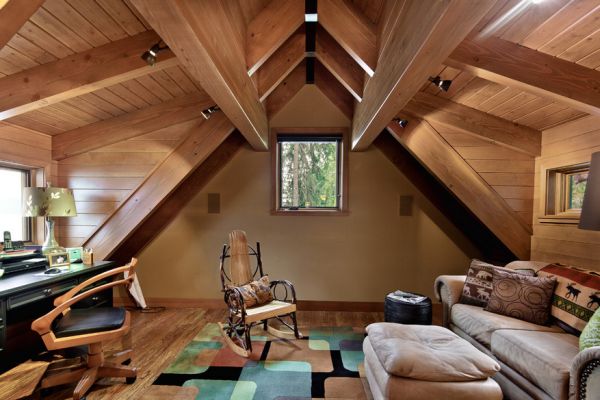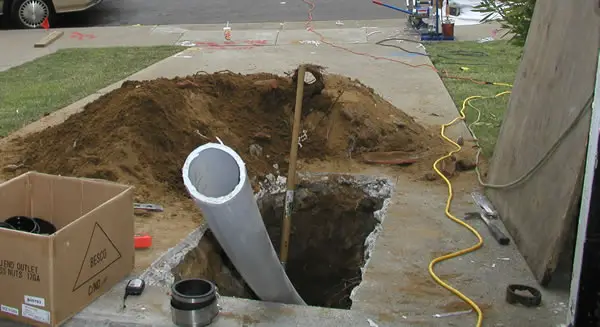The attic is seldom given more than a glance by most people. If your attic heat is not managed correctly, you can severely impact your home’s structural integrity and monthly utility costs. This is why the attic is such an essential aspect of any home.
The temperature in the attic is one of the most overlooked aspects of home maintenance. We will talk about the ideal attic temperature for that exact reason in this post today.
What Is the Ideal Attic Temperature?
The ideal attic temperature is 60°F in the winter and 10-20°F above the outside temperature in the summer. If your attic temperature exceeds 130 degrees, it can affect your energy cost and the condition of your roof.
Attic temperature control is difficult but essential to keep your home comfortable and your utility costs low. You can start by cleaning out your attic, which is the first step towards accomplishing your goal.
Later on, we’ll further depth the dangers posed by hot attics. It’s important to note that the temperature in your attic should be comparable to the ambient temperature. During the hottest months of the year, you should keep your attic temperature no higher than 10-20 degrees above the outdoor temperature, with a maximum of 130 degrees.
In many homes, the attic is seen as the most useless section. It’s referred to as “an old warehouse,” and you may store stuff you may need in the future there (but never actually use it again). For those of us who have an attic, this article is for you; we’ll help you understand its importance.
Observing simple physics, you’ll see that hot air rises while cold air is pushed down. It’s easy to see your attic’s potential impact on keeping your home clean if you grasp this concept.
Why is an Attic So Hot?
Attic insulation is critical to maintaining a constant temperature in your attic. Attic temperatures rise because of a lack of insulation and inadequate air sealing. Many people assume that excessive attic insulation causes hot air to be trapped.
Convection is the most common method for controlling the temperature of an attic, bringing cool air from the vents around the perimeter of the roof up to the roof’s peak as the hot air rises. Ideally, this would allow you to open all of your house’s windows and bring the temperature in your attic down to that of the outside air.
Initially, you will heat the shingles, then the sheathing, the rafters, and any boxes kept in your attic. Temperatures in the attic can skyrocket due to radiant heat buildup, which occurs because the attic is not insulated like the rest of the home and gets heat directly from the sun through the outer walls. Excessive heat is generated when the heat stored in the system is released into the atmosphere at a rate quicker than the air can pass through the vents.
Placing fans at the uppermost vents may speed up hot air flow out of an overheated attic. Throughout the night, this stored heat will continue to radiate. This is just a short-term fix that does nothing to lessen the heat trapped in the attic. Check out some smart exterior resolutions for battling the heat.
Below is a list of the leading causes of an overheated attic outlined in the following paragraphs for your convenience.
Radiant heat is the primary cause of attic temperatures soaring. An attic’s principal means of cooling is convection. Hot air is drawn in via Soffit vents and expelled through the roof peak.
The attic receives heat from the sun, is stored in the roof, and is constantly released back into the attic.
Heating occurs between the shingles and the internal sheathing, spreading to the joists, insulation, and the surrounding air through thermodynamics.
Why Is It Critical to Lower Attic Temperatures?
Attic temperature reduction has a beneficial ripple effect. You will be much more comfortable when it comes time to take down your Christmas decorations, but your roof will be less prone to damage, and your power costs will be lower.
The harmful consequences of a hot attic are many and much more unpleasant than a bit of precipitation. If you’ve ever been curious about how hot an attic can become, consider the following: In the summer, the average temperature in a stuffy attic is 150 degrees. That’s hot enough to cook an egg and bake your roof’s shingles—this kind of damage results in leaks, which might eventually result in significant structural damage.
It’s vital to discover how to keep your attic cool throughout the summer months before it develops into a more major maintenance problem. MEI has years of expertise assisting clients in determining the most effective method of attic cooling. If you’re sick of paying excessive energy bills and want to save money, call us immediately to schedule a Home Energy Audit.
Bottom Line
Hot attic solutions aren’t usually the simplest or most cost-effective to accomplish yourself when considering the ideal attic temperature. Even if you have a few strategically positioned fans, the radiant heat will still be absorbed and trapped in your attic’s old nic, so they won’t give long-term respite.
The world’s health is more important to us than your comfort or savings, and we want to help you choose the best approach to cool your attic. If you’ve been putting off this summer job for too long, contact roofing or insulation experts to start the ball moving. If you need a second opinion before tackling this endeavor, we’d be happy to assist you.






